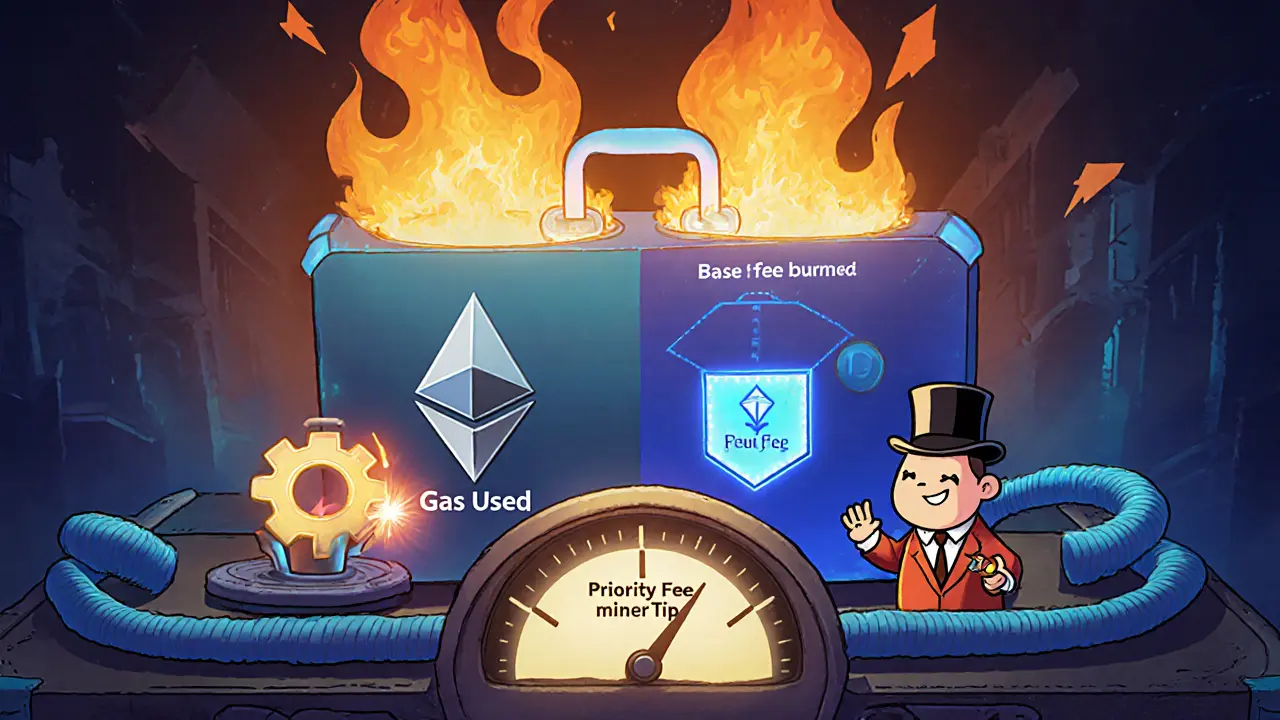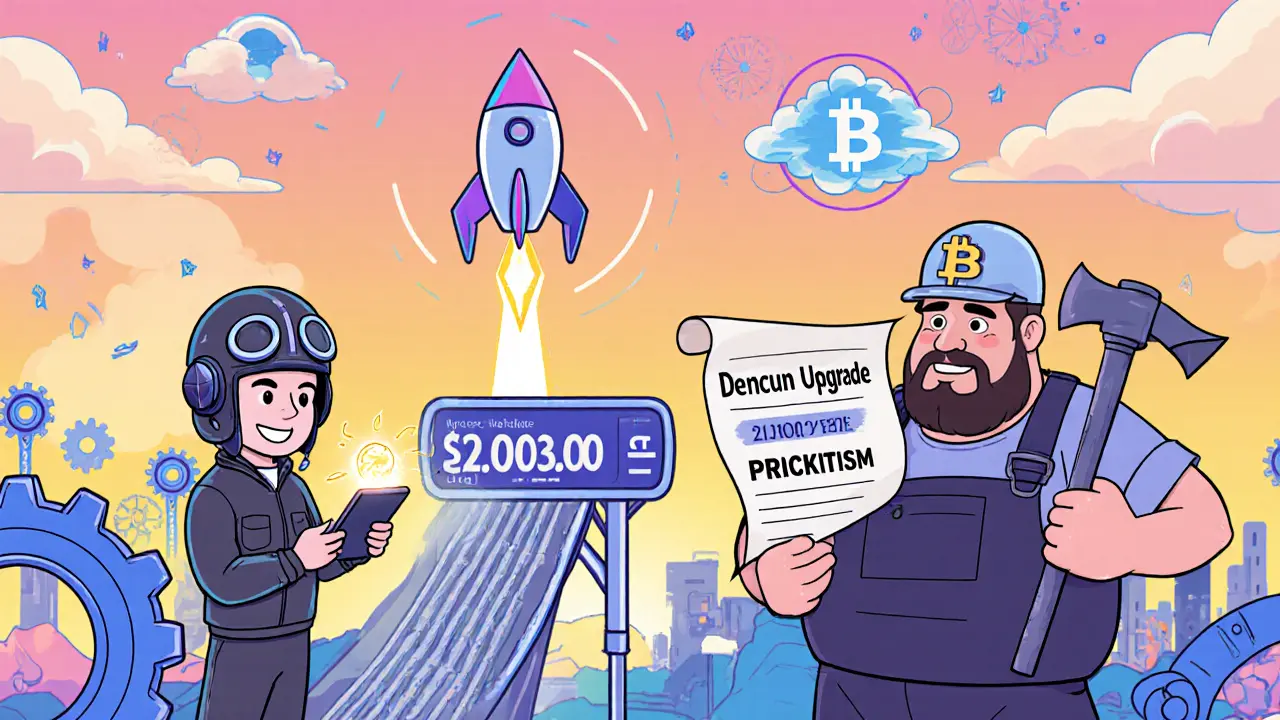Priority Fees & Miner Tips: How They Work in Ethereum & Bitcoin

Jul, 13 2025
Priority Fee Calculator
Recommended Fee
Priority fees, also called miner tips, are the extra cash you pay to make sure your transaction jumps to the front of the line. In a world where block space is limited and everyone wants their move confirmed fast, those little nudges can mean the difference between “instant” and “stuck for hours”.
What Are Priority Fees and Miner Tips?
At their core, a miner tip is an optional payment that goes straight to the validator (or miner) who adds your transaction to the next block. Think of it as a tip you leave for a waiter when you want faster service. The tip doesn’t affect the base cost of the transaction-it’s a bonus that says, “Hey, I really need this done now.”
Before Ethereum’s London upgrade in August 2021, the whole fee market was a chaotic auction where you guessed a gas price and hoped it was high enough. That model made fee estimation a nightmare, especially during spikes like the CryptoKitties craze. EIP‑1559 introduced a predictable base fee that gets burned and a separate priority fee you can set yourself.
How Ethereum Handles Fees After EIP‑1559
Ethereum now splits the cost into three parts:
- Base fee: a mandatory amount that changes automatically based on network demand and gets destroyed.
- Gas used: the computational work your transaction requires (21,000 gas for a simple ETH transfer, more for smart‑contract calls).
- Priority fee (miner tip): the extra you add to sweeten the deal for validators.
The total ETH you pay is (gas used × gas price) + priority fee. Tools like Etherscan’s Gas Tracker or MetaMask’s “Advanced Gas Controls” show real‑time suggestions. As of 2023, the recommended minimum tip is about 2 Gwei, but during moderate congestion you often need 5‑10 Gwei to see your tx in the next block.

Bitcoin’s Fee Model and the Shift Away from Priority
Bitcoin took a different route. Early clients calculated a “priority” value based on input size, age, and transaction size, letting tiny fees slip through if the priority score was high enough. The formula was roughly:
priority = Σ (input_value × input_age) / transaction_size
By 2023, miners had largely abandoned that system. Today they pick transactions solely on sat/byte-the amount of satoshis you pay per byte of data. No more free‑priority tricks; you simply raise the fee‑rate to outbid others. That makes the market simpler but gives you less granular control over speed versus cost.
Comparing Ethereum and Bitcoin Fee Structures
| Aspect | Ethereum (EIP‑1559) | Bitcoin (Current) |
|---|---|---|
| Base cost unit | Gas (computational work) | Transaction size (bytes) |
| Dynamic base fee | Yes, burned each block | No, fee‑rate set by user |
| Tip/priority fee | Optional, paid to validator | None (fee‑rate replaces tip) | ight>
| Typical tip range (2023) | 2‑10 Gwei (low), 10‑50 Gwei (moderate) | 1‑15 sat/byte (depends on congestion) |
| Fee predictability | High after base‑fee burn, but tip adds variance | Moderate; fee‑rate market is transparent |
In short, Ethereum gives you two levers-base fee (which you can’t control) and priority fee (which you can). Bitcoin gives you a single lever: the fee‑rate per byte. Both aim to fill blocks as fast as possible, but the user experience feels pretty different.

Practical Tips for Setting the Right Miner Tip
So how do you pick a good tip without overpaying? Here are some battle‑tested tricks:
- Check a live gas tracker. Sites like Etherscan update every 15 seconds and label “low”, “average”, and “high” tip recommendations.
- Start low, bump up. Submit with 2‑3 Gwei during calm periods. If it lingers in the mempool for >5 min, resend with a 10‑20% higher tip (a technique called “gas bumping”).
- Use wallet automation. MetaMask’s “Advanced Gas Controls” and Blocknative’s Gas Platform API can auto‑adjust tips based on real‑time congestion.
- Watch your transaction size. Larger contracts need more gas, so the same tip yields a lower “tip per gas” ratio. Adjust upward for complex calls.
- Consider layer‑2 options. With rollups like Arbitrum or Optimism, the underlying tip can be tiny because the L2 handles ordering; the main chain only sees a bundled batch.
For Bitcoin users, the rule of thumb is simple: aim for the median sat/byte fee shown on mempool.space or a similar explorer. If you need confirmation in the next block, add 20‑30% above the median; for non‑urgent moves, drop to the 10‑percentile.

Future Trends in Fee Markets
Both ecosystems are still evolving. Ethereum’s upcoming Dencun upgrade (EIP‑4844) promises to slash data‑blob costs, which should drive down priority fees for Layer‑2 rollups dramatically-some estimates say 10‑100× cheaper. Meanwhile, the Ethereum roadmap talks about “multi‑dimensional fee markets” that separate fees for computation, storage, and bandwidth, giving developers even finer control.
Bitcoin’s “Mempool‑as‑a‑Service” proposal could re‑introduce a kind of priority‑fee system for specific services, but it’s still in the discussion phase. The bigger story is that as more transactions move off‑chain to rollups, the on‑chain tip will matter less for everyday users and more for high‑value, latency‑sensitive trades.
What does that mean for you? If you’re a casual user, keep an eye on wallet recommendations and let the software handle the tip. If you’re a developer or a trader, consider building an automated fee‑adjustment bot that reads the mempool, predicts congestion spikes, and tweaks your tip in real time. That’s how the pros keep their costs down while staying fast.
Key Takeaways
- Priority fees (miner tips) are optional but crucial for fast confirmation on Ethereum.
- Ethereum’s fee model is dual: a burned base fee plus a user‑set tip; Bitcoin relies on a single sat/byte fee‑rate.
- Use live trackers, start low, and bump up if needed to avoid overpaying.
- Layer‑2 solutions and upcoming upgrades will likely reduce the importance of on‑chain tips.
- Automation tools (MetaMask, Blocknative, custom bots) are the best way to stay cost‑effective.
What is the difference between a base fee and a priority fee on Ethereum?
The base fee is mandatory, adjusts automatically with demand, and gets burned. The priority fee (or miner tip) is optional, set by you, and goes straight to the validator to speed up inclusion.
Do I still need to add a miner tip on Bitcoin?
No. Bitcoin miners pick transactions based on the fee‑rate (satoshis per byte). Raising that rate replaces the old priority‑ticket system.
How much tip should I use during a network spike?
During a spike, aim for 10‑50 Gwei on Ethereum, depending on how urgent the transaction is. For Bitcoin, add 20‑30% above the median sat/byte fee shown on mempool explorers.
Can I automate priority fee adjustments?
Yes. Wallets like MetaMask have built‑in auto‑adjust features, and services like Blocknative offer APIs you can plug into a custom script to bump fees in real time.
Will upcoming Ethereum upgrades make tips obsolete?
Not entirely. Upgrades like EIP‑4844 will lower data costs, which reduces the tip needed for rollups, but the tip will still exist for direct L1 transactions that require fast finality.